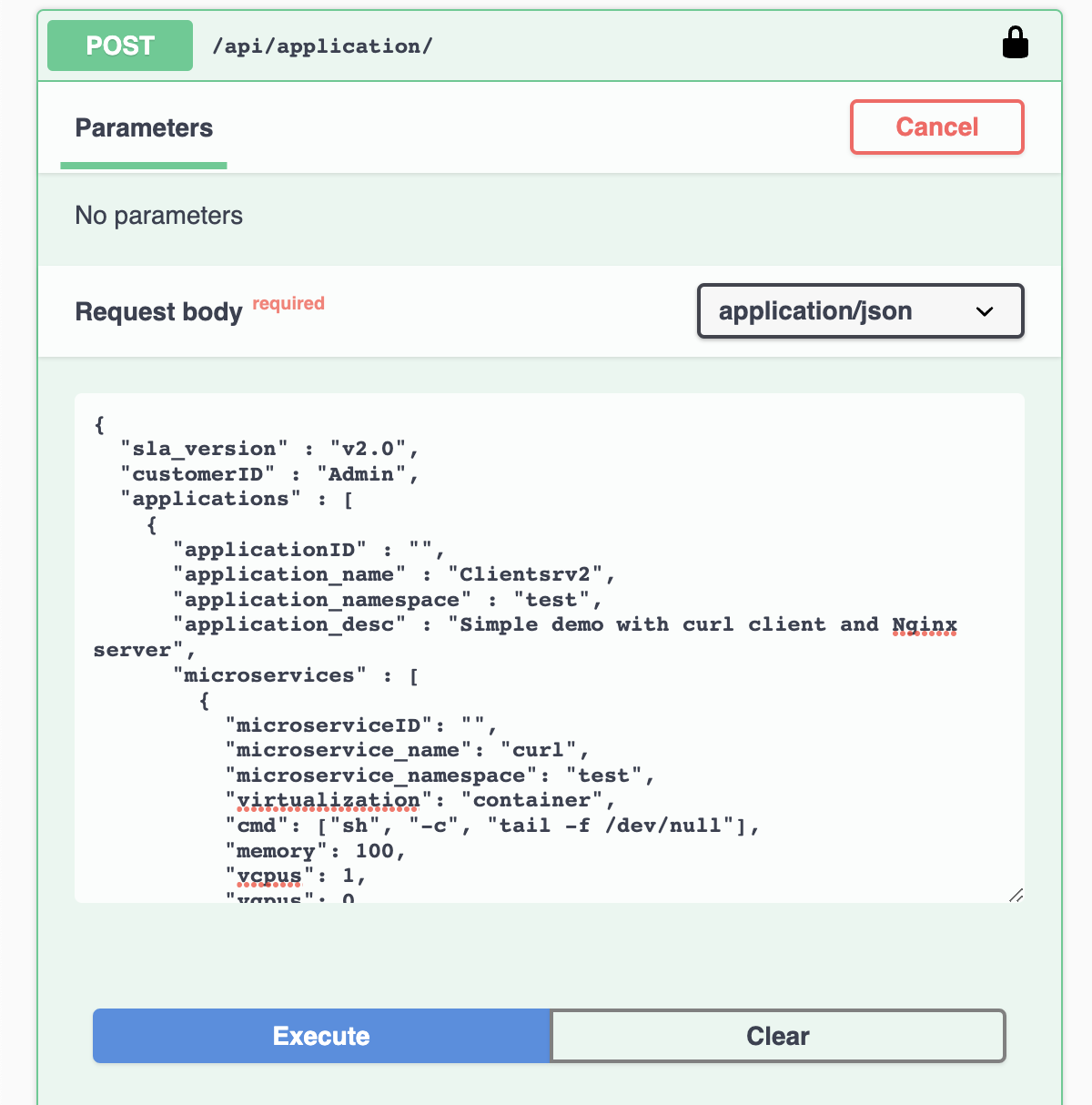Oakestra is an orchestration platform designed for Edge Computing. Popular orchestration platforms such as Kubernetes or K3s struggle at maintaining workloads across heterogeneous and constrained devices. Oakestra is build from the ground up to support computation in a flexible way at the edge.
🌐 Read more about the project at: oakestra.io
📚 Check out the project wiki at: oakestra.io/docs
- 🌳 Get Started
- 🎯 Troubleshoot
- 🛠️ How to create a development cluster
- 🎼 Deployment descriptor
- 🩻 Use the APIs to deploy a new application and check clusters status
- 🕸️ Networking
Before being able to deploy your first application, we must create a fully functional Oakestra Root 👑, to that we attach the clusters 🪵, and to each cluster we attach at least one worker node 🍃.
In this get-started guide, we place everything on the same machine. More complex setups can be composed following our wiki at oakestra.io/docs/getstarted/get-started-cluster.
- Linux machine with iptables
- Docker + Docker Compose
Let's start our Root, the dashboard, and a cluster orchestrator all together.
1) Let's set the initial environment variables
## Choose a unique name for your cluster
export CLUSTER_NAME=My_Awesome_Cluster
## Give a name or geo coordinates to the current location
export CLUSTER_LOCATION=My_Awesome_Apartment
## IP address where this root component can be reached to access the APIs
export SYSTEM_MANAGER_URL=<IP address>
# Note: Use a non-loopback interface IP (e.g. any of your real interfaces that have internet access).
# "0.0.0.0" leads to server issuesA location can be in the following forms:
- < STRING > representing a location name. E.g.,
my_home - LATITUDE,LONGITUDE,RADIUS representing the geographical area covered by this cluster. E.g.,
48.1397,11.5451,1000, which represents an area of 1km from Munich city center.
2) Clone and move inside the repo
# Feel free to use https or ssh for cloning
git clone https://github.com/oakestra/oakestra.git && cd oakestra3) Start the root and cluster orchestrator using the 1-DOC.yaml compose file.
sudo -E docker-compose -f run-a-cluster/1-DOC.yaml up
# If this should not work for you try "docker compose" instead1-DOC stands for 1 Device One Cluster, meaning that all the components are deployed locally.
Download and install the Node Engine and the Network Manager:
wget -c https://github.com/oakestra/oakestra/releases/download/v0.4.203/NodeEngine_$(dpkg --print-architecture).tar.gz && tar -xzf NodeEngine_$(dpkg --print-architecture).tar.gz && chmod +x install.sh && mv NodeEngine NodeEngine_$(dpkg --print-architecture) && ./install.sh $(dpkg --print-architecture)
wget -c https://github.com/oakestra/oakestra-net/releases/download/v0.4.203/NetManager_$(dpkg --print-architecture).tar.gz && tar -xzf NetManager_$(dpkg --print-architecture).tar.gz && chmod +x install.sh && ./install.sh $(dpkg --print-architecture)
Configure the Network Manager by editing /etc/netmanager/netcfg.json as follows:
{
"NodePublicAddress": "<IP ADDRESS OF THIS DEVICE>",
"NodePublicPort": "<PORT REACHABLE FROM OUTSIDE, use 50103 as default>",
"ClusterUrl": "<IP Address of cluster orchestrator or 0.0.0.0 if deployed on the same machine>",
"ClusterMqttPort": "10003"
}Start the NetManager on port 6000
sudo NetManager -p 6000
On a different shell, start the NodeEngine with the -6000 paramenter to connect to the NetManager.
sudo NodeEngine -n 6000 -p 10100 -a <Cluster Orchestrator IP Address>
If you see the NodeEngine reporting metrics to the Cluster...
🏆 Success!
✨🆕✨ If the worker node machine has KVM installed and it supports nested virtualization, you can add the flag -u=true to the NodeEngine startup command to enable Oakestra Unikernel deployment support for this machine.
Let's use the dashboard to deploy you first application.
Navigate to http://SYSTEM_MANAGER_URL and login with the default credentials:
- Username:
Admin - Password:
Admin
Deactivate the Organization flag for now. (Not like it is depicted in the reference image)
Add a new application, and specify the app name, namespace, and description.
N.b.: Max 8 characters for app name and namespace
Add a new service to the application and set the service name, namespace, and image as follows
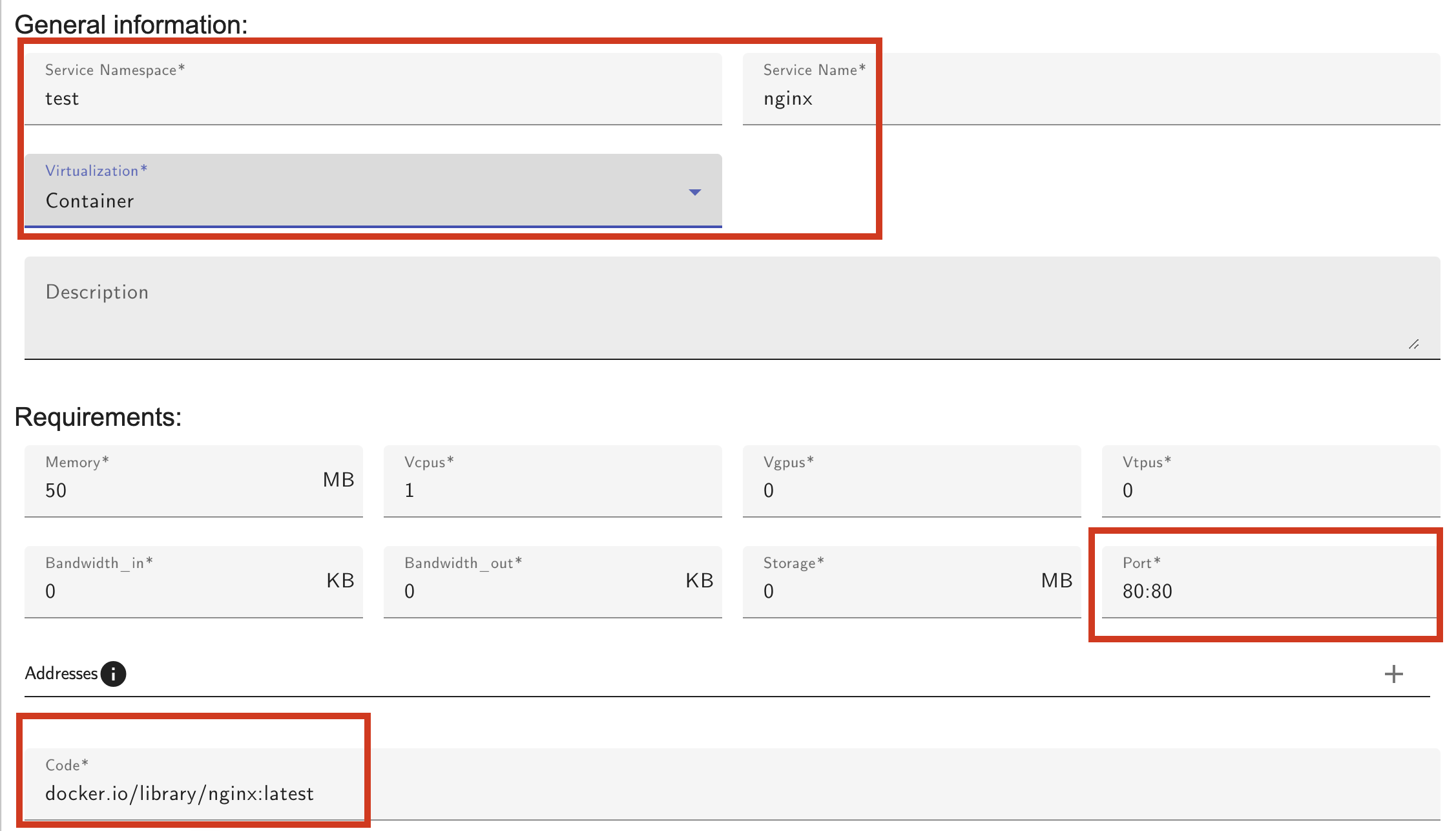
- Service Name:
nginx - Service namespace:
test - Virtualization:
Container - Code:
docker.io/library/nginx:latest - Port:
80:80we map port 80 to external port 80
Now hit the Deploy All button to deploy all the configured services.
After a while, you should see the service up and running. Click it to get more info.
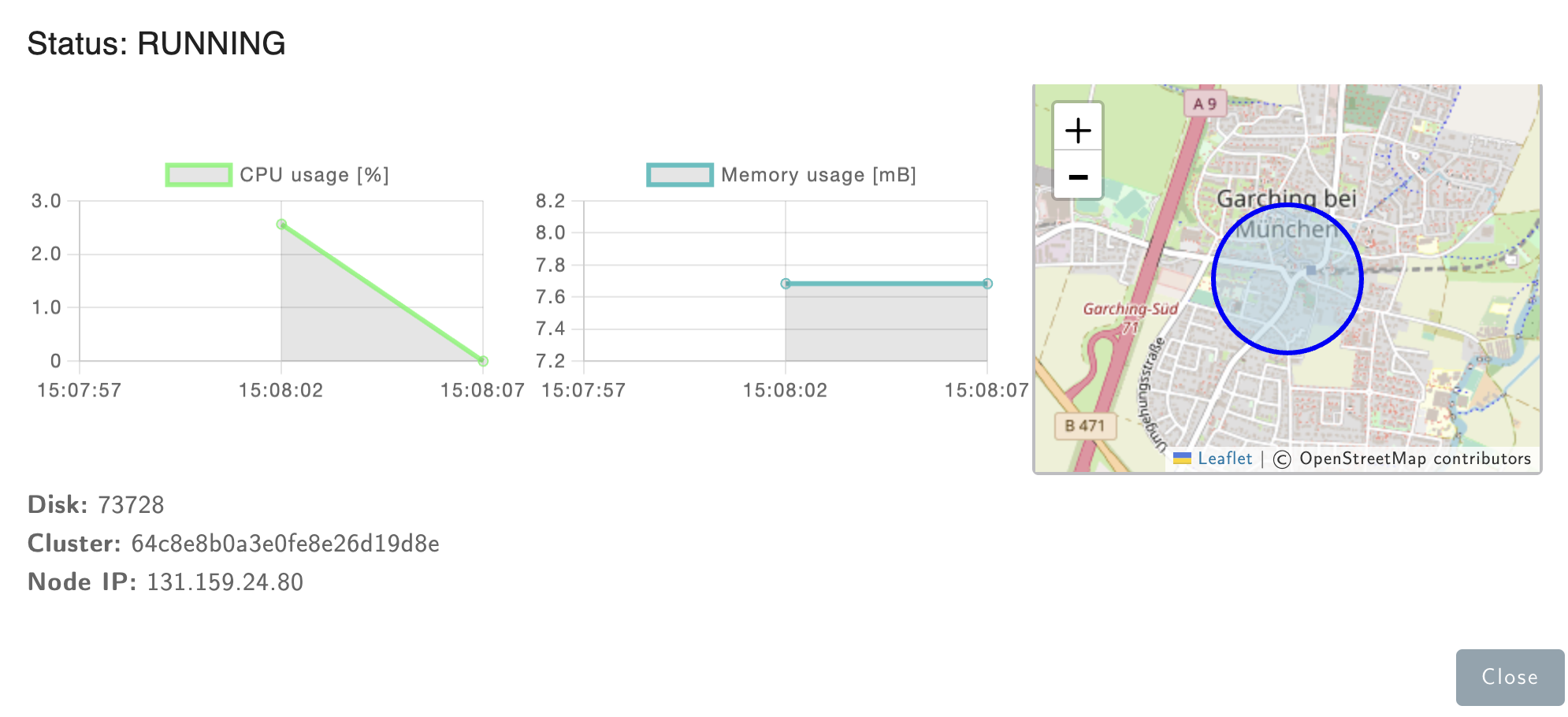
The Node IP field represents the address where you can reach your service.
You can try in your browser if you can see your nginx application at http://NODE_IP/
-
After exporting the env variables at step 1, if you're using sudo with docker-compose, remember the
-Eparameter. -
Something is off at the root level. Most likely, the cluster network component is not receiving a subnetwork from the root. Make sure all the root components are running.
-
The cluster network components are not reachable. Either they are not running, or the config file
/etc/netmanager/netcfg.jsonmust be updated. -
There is no worker node with the specified capacity or no worker node deployed at all. Are you sure the worker node startup was successful?
-
The node IP is from the cluster orchestrator perspective so far. If it shows a different IP than expected, it's probably the IP of the interface used to reach the cluster orchestrator.
On a Linux machine first, install Docker and Docker-compose. Then, run the following commands to set up the Root Orchestrator components.
export SYSTEM_MANAGER_URL=<Address of current machine> #Used by the dashboard
cd root_orchestrator/
docker-compose up --build The following ports are exposed:
- Port 80 - Dashboard
- Port 10000 - System Manager (It also needs to be accessible from the Cluster Orchestrator)
For each one of the cluster orchestrators that needs to be deployed
- Log into the target machine/vm you intend to use
- Install Docker and Docker-compose.
- Export the required parameters:
export SYSTEM_MANAGER_URL=" < ip address of the root orchestrator > "
export CLUSTER_NAME=" < name of the cluster > "
export CLUSTER_LOCATION=" < location of the cluster > "
- Then, run the following commands to set up the Cluster Orchestrator components.
cd cluster_orchestrator/
docker-compose up --build The following ports are exposed:
- 10100 Cluster Manager (needs to be accessible by the Node Engine)
You can either use the pre-compiled binaries or compile them on your own.
Requirements
- Linux OS with the following packages installed (Ubuntu and many other distributions natively supports them)
- iptable
- ip utils
- port 50103 available
Compile and install the binary with:
cd go_node_engine/build
./build.sh
./install.sh $(dpkg --print-architecture)
Then configure the NetManager and perform the startup as usual.
Together with the application, it's possible to perform a deployment by passing a deployment descriptor (or SLA) in .json format to the APIs or the frontend.
Since version 0.4, Oakestra (previously, EdgeIO) uses the following format for a deployment descriptor format.
E.g.: deploy_curl_application.yaml
{
"sla_version" : "v2.0",
"customerID" : "Admin",
"applications" : [
{
"applicationID" : "",
"application_name" : "clientsrvr",
"application_namespace" : "test",
"application_desc" : "Simple demo with curl client and Nginx server",
"microservices" : [
{
"microserviceID": "",
"microservice_name": "curl",
"microservice_namespace": "test",
"virtualization": "container",
"cmd": ["sh", "-c", "tail -f /dev/null"],
"memory": 100,
"vcpus": 1,
"vgpus": 0,
"vtpus": 0,
"bandwidth_in": 0,
"bandwidth_out": 0,
"storage": 0,
"code": "docker.io/curlimages/curl:7.82.0",
"state": "",
"port": "9080",
"added_files": []
},
{
"microserviceID": "",
"microservice_name": "nginx",
"microservice_namespace": "test",
"virtualization": "container",
"cmd": [],
"memory": 100,
"vcpus": 1,
"vgpus": 0,
"vtpus": 0,
"bandwidth_in": 0,
"bandwidth_out": 0,
"storage": 0,
"code": "docker.io/library/nginx:latest",
"state": "",
"port": "6080:60/tcp",
"addresses": {
"rr_ip": "10.30.30.30"
},
"added_files": []
}
]
}
]
}This deployment descriptor example describes one application named clientsrvr with the test namespace and two microservices:
- nginx server with test namespace, namely
clientsrvr.test.nginx.test - curl client with test namespace, namely
clientsrvr.test.curl.test
This is a detailed description of the deployment descriptor fields currently implemented:
- sla_version: the current version is v0.2
- customerID: id of the user, default is Admin
-
application list, in a single deployment descriptor is possible to define multiple applications, each containing:
- Fully qualified app name: A fully qualified name in Oakestra is composed of
- application_name: unique name representing the application (max 10 char, no symbols)
- application_namespace: namespace of the app, used to reference different deployment of the same application. Examples of namespace name can be
defaultorproductionortest(max 10 char, no symbols) - applicationID: leave it empty for new deployments, this is needed only to edit an existing deployment.
- application_desc: Short description of the application
- microservice list, a list of the microservices composing the application. For each microservice the user can specify:
- microserviceID: leave it empty for new deployments, this is needed only to edit an existing deployment.
- Fully qualified service name:
- microservice_name: name of the service (max 10 char, no symbols)
- microservice_namespace: namespace of the service, used to reference different deployment of the same service. Examples of namespace name can be
defaultorproductionortest(max 10 char, no symbols)
- virtualization: currently the supported virtualization are
containeror (✨🆕✨)unikernel - cmd: list of the commands to be executed inside the container at startup or the unikernel parameters
- environment: list of the environment variables to be set, E.g.: ['VAR=fOO'].
- vcpu,vgpu,memory: minimum cpu/gpu vcores and memory amount needed to run the container
- vtpus: currently not implemented
- code: public link of OCI container image (e.g.
docker.io/library/nginx:latest) or (✨🆕✨) link to unikernel image in.tar.gzformat (e.g.http://<hosting-url-and-port>/nginx_x86.tar.gz). - storage: minimum storage size required (currently the scheduler does not take this value into account)
- bandwidth_in/out: minimum required bandwidth on the worker node. (currently the scheduler does not take this value into account)
- port: port mapping for the container in the syntax hostport_1:containerport_1[/protocol];hostport_2:containerport_2[/protocol] (default protocol is tcp)
- addresses: allows to specify a custom ip address to be used to balance the traffic across all the service instances.
- rr_ip: [optional field] This field allows you to setup a custom Round Robin network address to reference all the instances belonging to this service. This address is going to be permanently bounded to the service. The address MUST be in the form
10.30.x.yand must not collide with any other Instance Address or Service IP in the system, otherwise an error will be returned. If you don't specify a RR_ip and you don't set this field, a new address will be generated by the system.
- rr_ip: [optional field] This field allows you to setup a custom Round Robin network address to reference all the instances belonging to this service. This address is going to be permanently bounded to the service. The address MUST be in the form
- constraints: array of constraints regarding the service.
- type: constraint type
direct: Send a deployment to a specific cluster and a specific list of eligible nodes. You can specify"node":"node1;node2;...;noden"a list of node's hostnames. These are the only eligible worker nodes."cluster":"cluster_name"The name of the cluster where this service must be scheduled. E.g.:
- type: constraint type
"constraints":[ { "type":"direct", "node":"xavier1", "cluster":"gpu" } ] - Fully qualified app name: A fully qualified name in Oakestra is composed of
-
From the dashboard you can create the application graphically and set the services via SLA. In that case you need to submit a different SLA, contianing only the microservice list:
{
"microservices": [
{
...
}
]
}After running a cluster you can use the debug OpenAPI page to interact with the apis and use the infrastructure.
connect to <root_orch_ip>:10000/api/docs
Authenticate using the following procedure:
- locate the login method and use the try-out button

- Use the default Admin credentials to login
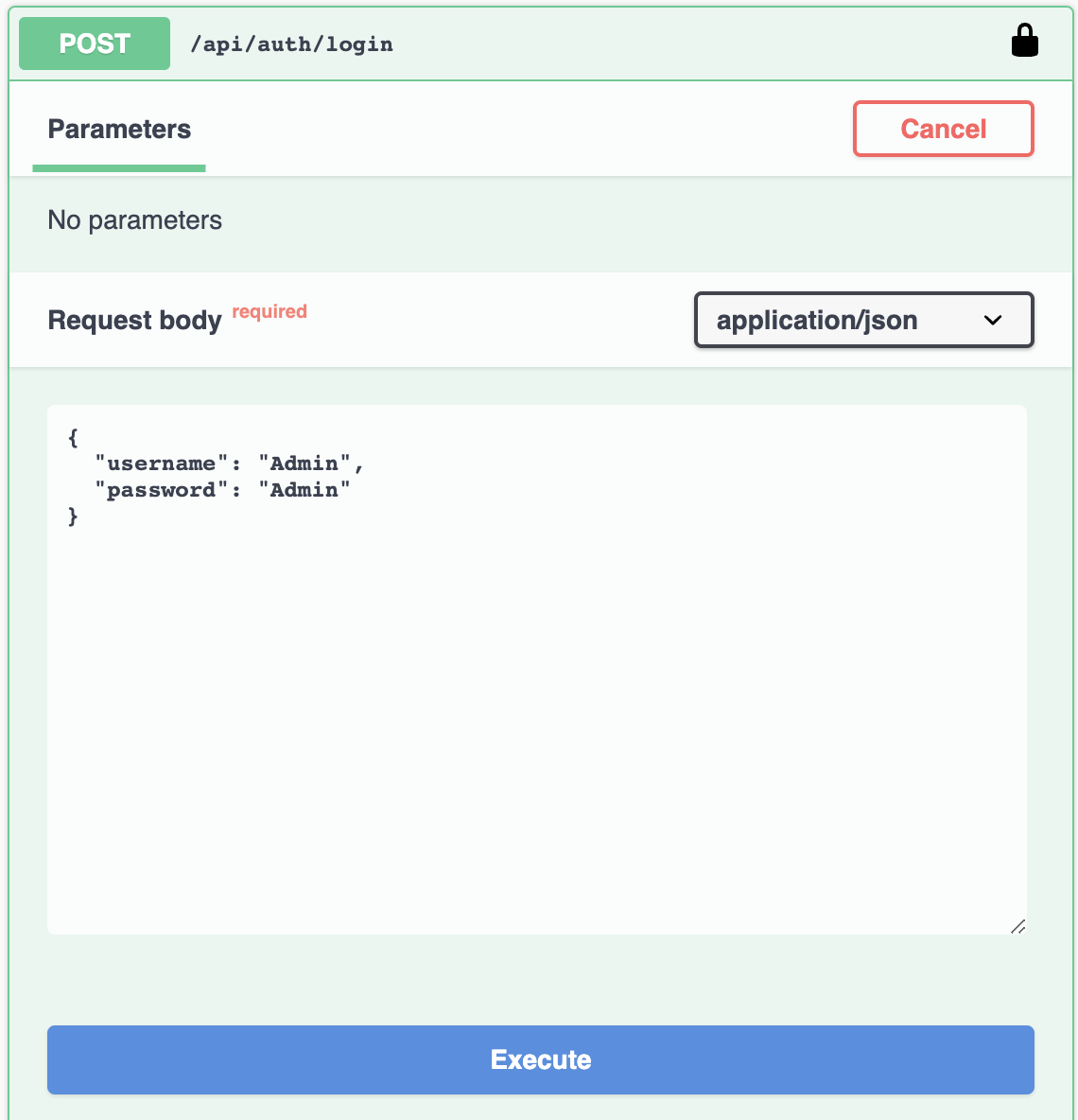
- Copy the result login token
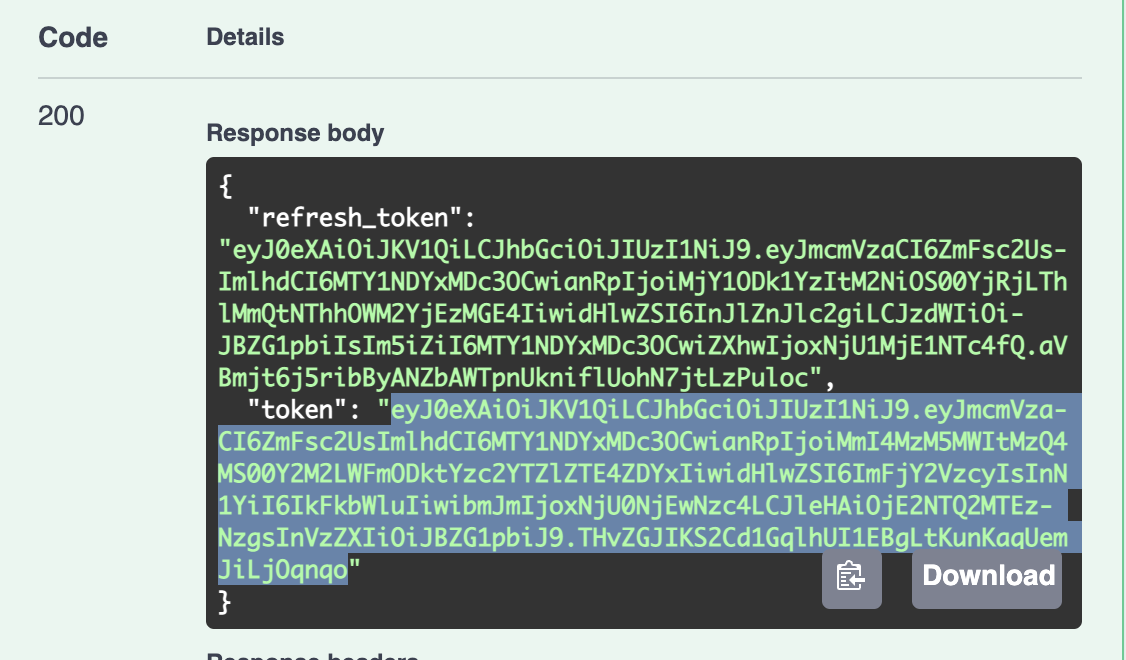
- Go to the top of the page and authenticate with this token

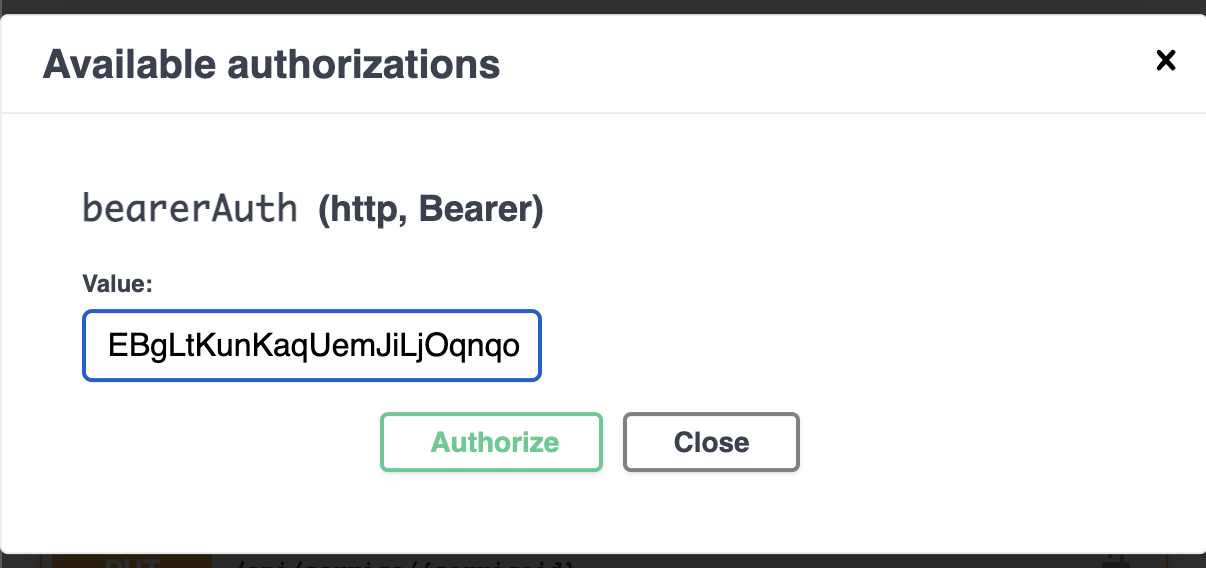
After you authenticate with the login function, you can try out to deploy the first application.
The response contains the Application id and the id for all the application's services. Now the application and the services are registered to the platform. It's time to deploy the service instances!
You can always remove or create a new service for the application using the /api/services endpoints.
- Trigger a deployment of a service's instance using
POST /api/service/{serviceid}/instance
each call to this endpoint generates a new instance of the service
- With
GET /api/aplications/<userid>(or simply /api/aplications/ if you're admin) you can check the list of the deployed application. - With
GET /api/services/<appid>you can check the services attached to an application - With
GET /api/service/<serviceid>you can check the status for all the instances of
- Use
DELETE /api/service/<serviceid>to delete all the instances of a service - Use
DELETE /api/service/<serviceid>/instance/<instance number>to delete a specific instance of a service - Use
DELETE /api/application/<appid>to delete all together an application with all the services and instances
- Use
GET /api/clusters/to get all the registered clusters. - Use
GET /api/clusters/activeto get all the clusters currently active and their resources.
It is also possible to use Unikernels by changing the virtulization in of the microservice
{
"sla_version": "v2.0",
"customerID": "Admin",
"applications": [{
"applicationID": "",
"application_name": "nginx",
"application_namespace": "test",
"application_desc": "Simple demo of an Nginx server Unikernel",
"microservices": [{
"microserviceID": "",
"microservice_name": "nginx",
"microservice_namespace": "test",
"virtualization": "unikernel",
"cmd": [],
"memory": 100,
"vcpus": 1,
"vgpus": 0,
"vtpus": 0,
"bandwidth_in": 0,
"bandwidth_out": 0,
"storage": 0,
"code": "https://github.com/Sabanic-P/app-nginx/releases/download/v1.0/kernel.tar.gz",
"arch": ["amd64"],
"state": "",
"port": "80:80",
"addresses": {
"rr_ip": "10.30.30.26"
},
"added_files": []
}]
}]
}Differences to Container Deployment:
- virtualization: set to unikernel
- code: Specifies a the remote Unikernel accessible via http(s). There can be multiple Unikernels in the same string seperated via ",".
- arch: Specifies the architecture of the Unikernel given in code. The order of architectures must match the order of Unikernles given via the code field
The network component is maintained in: https://www.oakestra.io/docs/networking



